What Is Live On Iphone 8 Plus Camera
The iPhone 8 and iPhone 8 Plus expect almost identical to their predecessors: aforementioned shape and dimensions and same screen size. And at first glance, the same cameras with identical resolutions too.
The iPhone 8 comes with a 12-megapixel wide-angle rear camera and a 7-megapixel selfie camera at the front.
The iPhone viii Plus has the same front end photographic camera for selfies. Just around the dorsum, you'll find dual 12-megapixel cameras: a wide-bending snapper and a telephoto camera.
Why would you need 2 cameras at the back? Well, for starters they permit you to zoom in on your subject field without affecting image quality.
But that's not all. The secondary camera also enables you to achieve a beautiful 'bokeh' effect on portraits. That's when yous blur out the background, while bringing your subject into super-sharp focus.
Those of you who pay shut attending to specifications may have noticed that on both phones the megapixel grading is unchanged from last twelvemonth.
Just to interpret this as a sign that zero much has changed and the camera quality has non improved would be a mistake.
Pixel count is no longer a reliable indicator of prototype quality. Instead of calculation more megapixels, Apple has enhanced the iPhone 8 and iPhone eight Plus' camera with sophisticated technology that's able to recognise the type of bailiwick and adjust exposure settings accordingly.
And as we'll meet, information technology's proved a very worthy investment indeed.
Bright low-cal and landscapes
Dynamic range is a technical term that refers the value of the brightest and darkest tones that a camera is able to record inside an image.
It also happens to be one of the areas where Apple claims its enhanced prototype processing technology will particularly amend the quality of your images.
A vivid afternoon was the perfect setting to put this to the test.
With the sun behind me it's undeniable that the shot beneath is impressive, with the image retaining details of the heaven and darker areas of the bush-league.
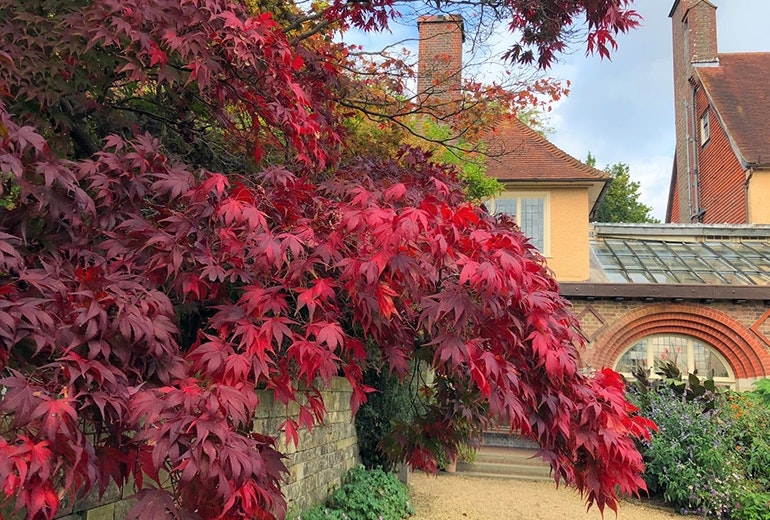
A blue heaven and detailed shadow in the same picture is commonly very hard to achieve.
With the sun to my left, the lighting for this shot is slightly less conducive to expert results. Yet the image still manages to capture the details of the front of the firm equally well as the sky.
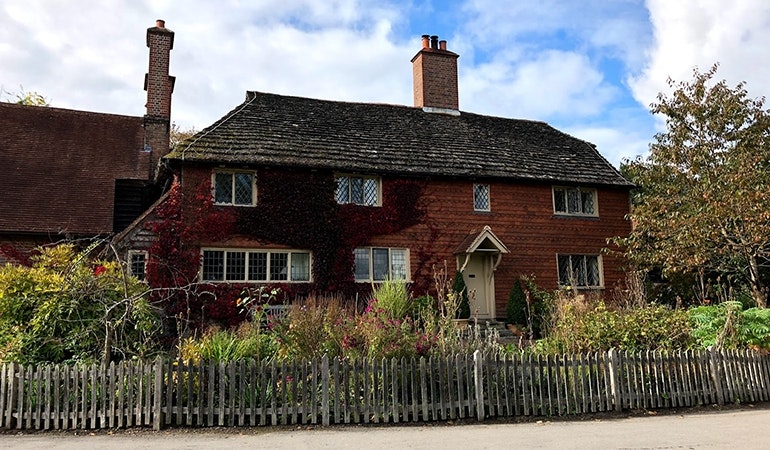
The red creeper looks very night in some areas, simply an acceptable outcome overall.
Things go a flake less well in more challenging conditions, though.
Sitting under a white canvas with low-cal spread overhead, y'all can meet how as the camera attempts to betrayal the darkest areas of the van, the load of pumpkins becomes somewhat overexposed and becomes all-white and indistinct.
In this case, the HDR (High Dynamic Range) didn't activate automatically and nosotros're left with less than attractive results.
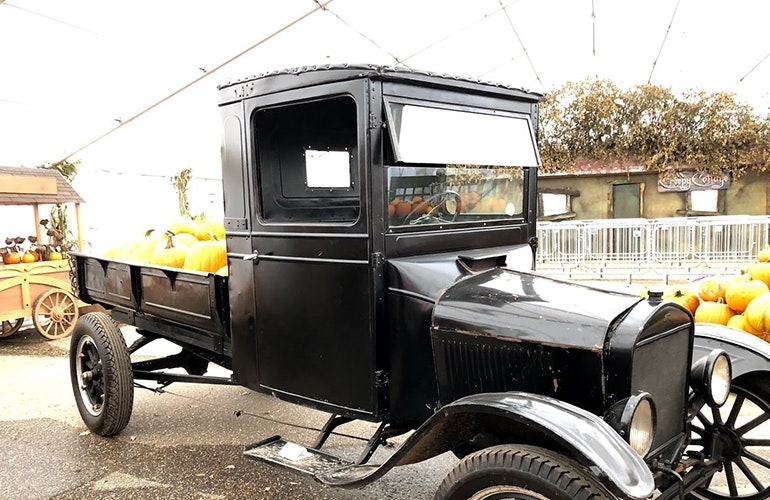
Things break downwardly when y'all have very night and very calorie-free areas. The background is overexposed, resulting in loss of particular.
HDR is a great technique cameras employ to increase their dynamic range artificially by merging different exposures into a single image. The result is a film that would be impossible to obtain with one exposure level.
In the iPhone 8 and eight Plus, running iOS 11, the HDR is set to "Machine" by default, this ways yous have no control over when information technology is activated.
However information technology is easy to brand it appear on the photographic camera interface:
Open Settings > Camera, and so scroll downwardly until you encounter the HDR (High Dynamic Range) section.
In here are two options: "Auto HDR", and "Keep Normal Photo".
Past Flicking "Machine HDR" you add the option to the camera interface. The second ane gives you the choice to keep the non-HDR version of the picture.
Yet, I advise you to leave that alone unless you have a good reason, or you lot'll end up with a lot of indistinguishable images.
For the image below we tried some other another diffused-light setting. Just with less black to expose to, the results are much better.
There's considerable over-exposure in some areas and the white flowers lose some detail, yet the colours in the foreground appear natural and in that location's enough of item in the darker areas.
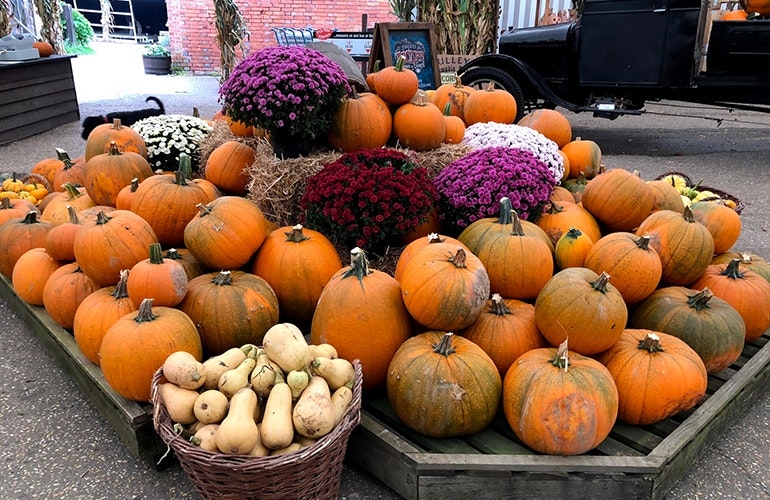
Dark areas nevertheless lose item, but a pretty good result overall.
Colour reproduction
In full general, iPhones have a tendency to over-saturate colours so they look a bit unnatural. That'south true this time around as well, especially with reds and oranges.
Whether you similar how this looks is a matter of personal gustation. Of form, saturation can be toned downwards later if you're non groovy.
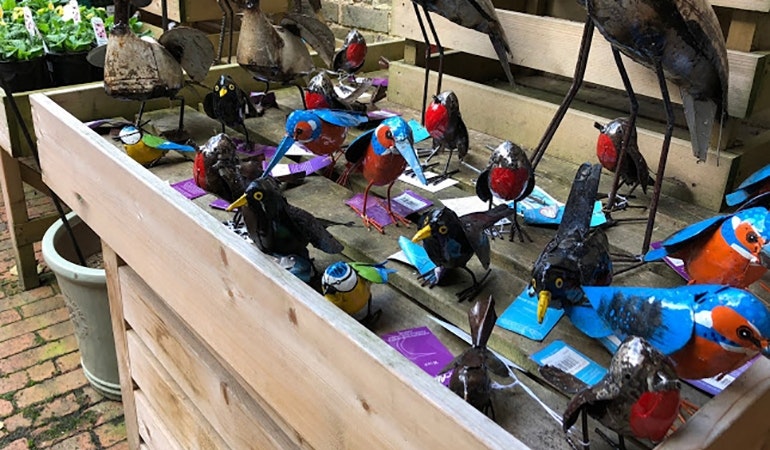
Shiny metal birds go the iPhone eight saturation treatment.
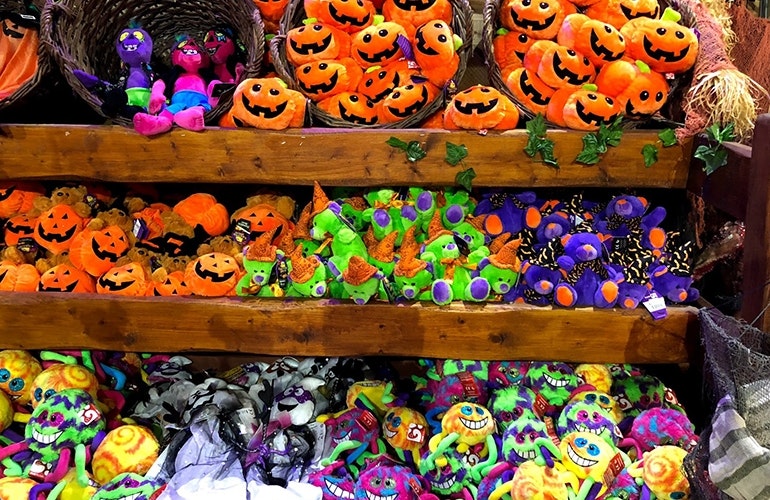
Danger Colour Overload! An example where saturation is pushed to the limit.
Portrait mode
Portrait mode is what really sets the iPhone 8 Plus apart from its smaller sibling and, to an extent, from whatsoever other smartphone out in that location.
Accessed using the text-menu running above the shutter push button, it gives a number of options that enable you to harness the ability of the Plus' secondary rear camera to create amazingly arresting portraits.
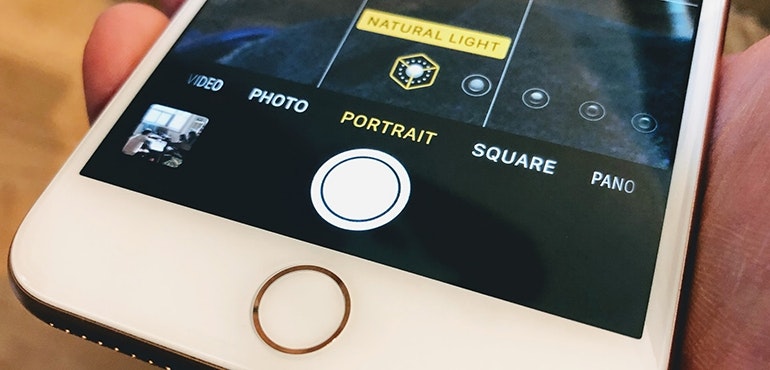
The virtually of import thing to note is that the portrait effects are not simply filters that are added to the paradigm after you've captured information technology.
When you accept the picture show, the sensor reads the contours and the dimensions of the face or the object it detects every bit the main subject. Information technology then adjusts the exposure accordingly.
The result is that it'southward separated from the background light.
The effects likewise simulate studio settings that would normally require what photographers telephone call 'coloured bounce cards'. These are photography aids that consist of a cogitating surface that artificially boosts lighting weather condition.
Some of the Portrait manner's tools, such every bit the studio-calorie-free, are in currently in beta fashion. That means that the version you lot'll use now is a piece of work-in-progress and isn't quite 'there' just yet.
Consequently, sometimes the results are hit and miss.
Still, you won't demand to rely on them to obtain a great portrait. As you can run across hither, simply hitting the "Portrait" option and framing your subject guarantees fantabulous shots.
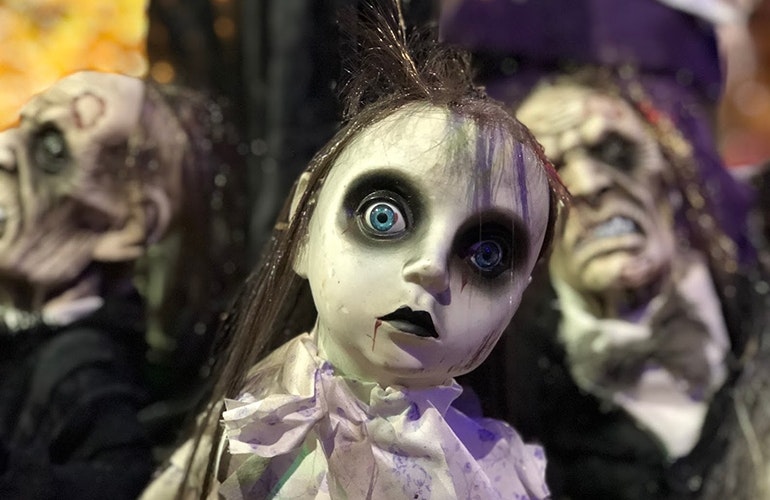
Portrait mode makes for great close-ups past blurring the background. I was impressed at the lack of distortion around the edges.

The calm before a rocket-powered free-kick? Or a metaphor for loneliness? Either way, just the right amount of blur makes for a beautiful shot.
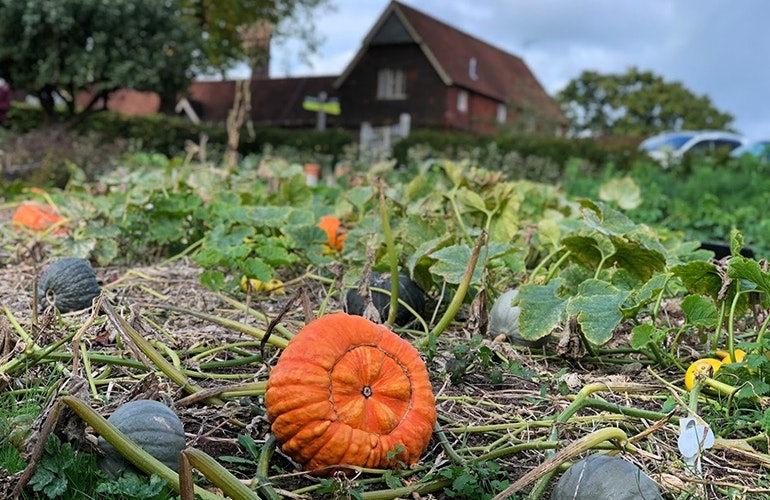
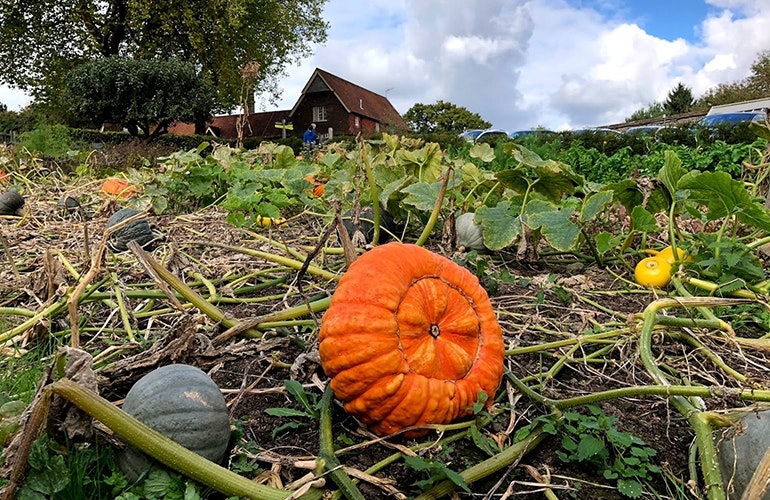
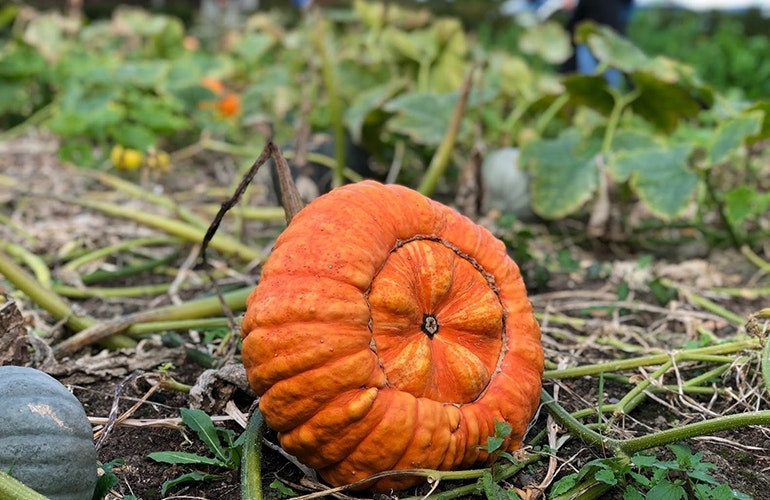
Close-upwards in Portrait mode. This is where the iPhone viii Plus really gives all-time results.
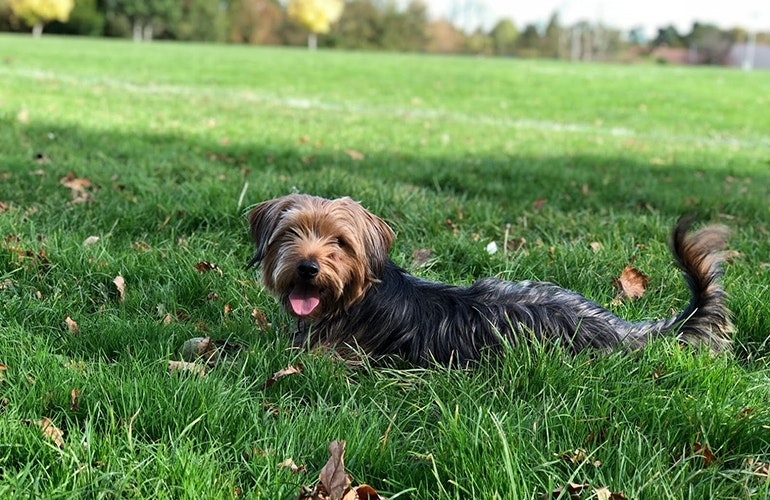
Portrait Mode is perfect for pets. Zoom isn't available, so set to get up shut.
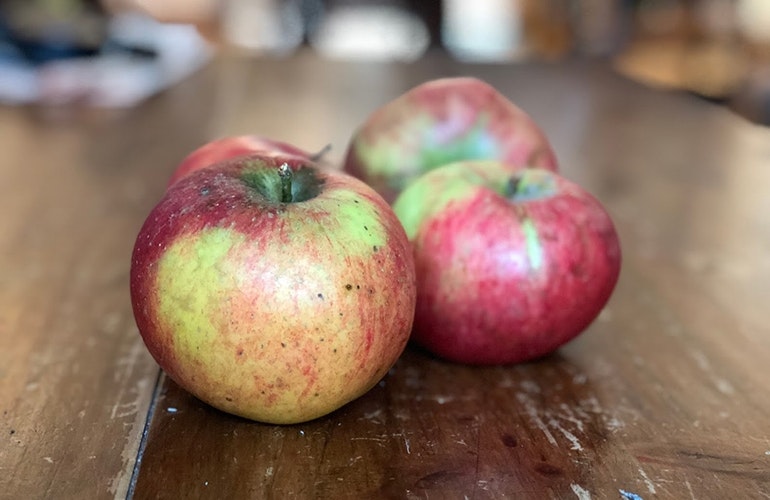
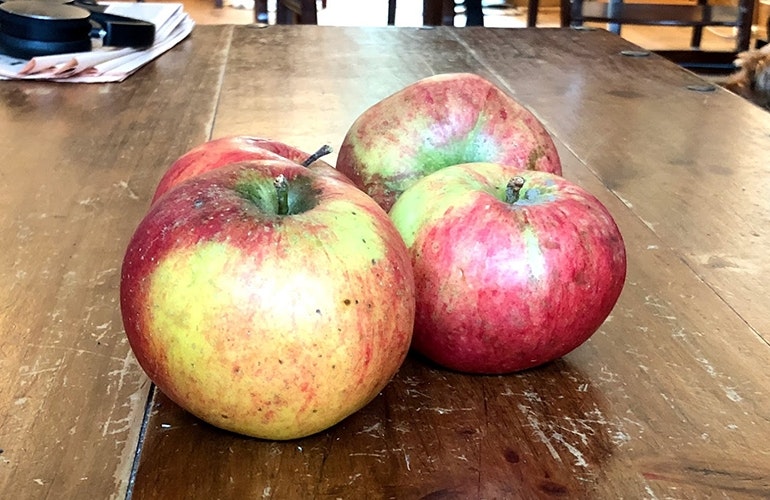
Information technology's worth remembering that although you can alter the Portrait lighting modes past editing the image, the level of groundwork blur cannot be adjusted.
Low light and dark scenes
Smartphone cameras in full general struggle with low-light conditions. Which means that images taken at night, indoors or in the gloaming usually don't match up to daytime shots.
Just nosotros institute the iPhone 8 bucks the trend. Not to the lowest degree here:
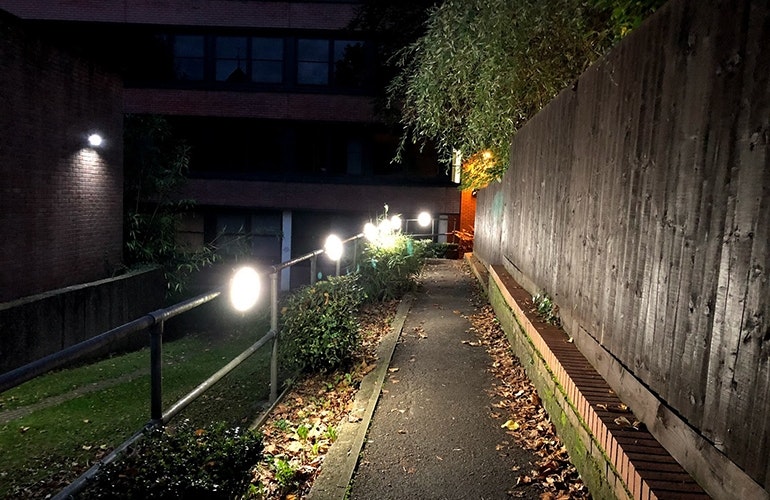
Depression-low-cal and night photography is all well-nigh choosing light sources advisedly. The standard broad angle lens, which features on the iPhone 8 and iPhone 8 Plus, is very forgiving and preserves a surprising corporeality of detail.
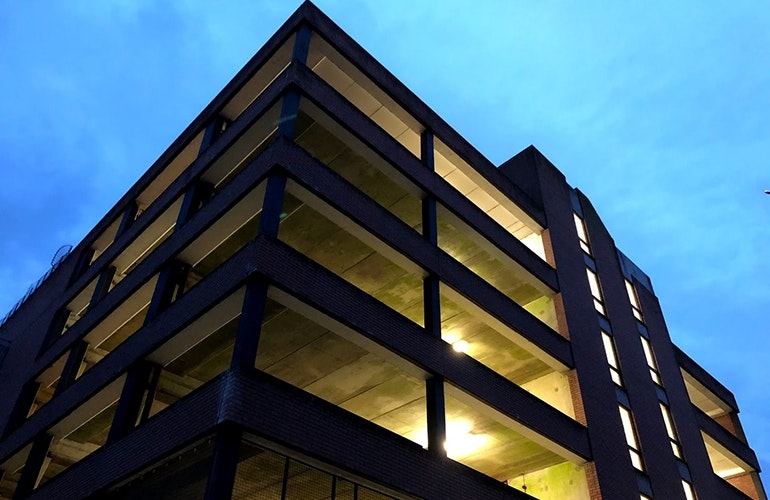
#evilbuilding? A dull car park by mean solar day can get interesting at sunset with no editing involved.
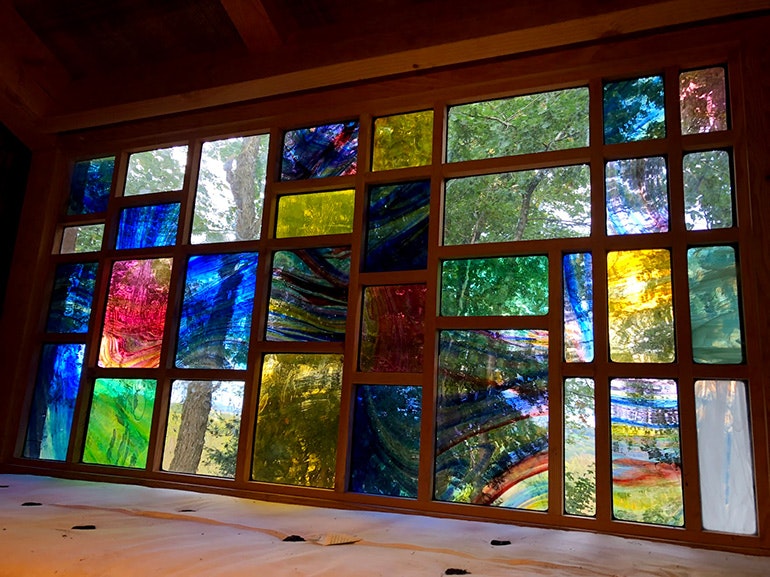
Taken from inside a dark cabin looking out. I'grand amazed at the amount of details visible both inside and exterior, equally well equally the rich colour of the stained glass. This is the kind of shot you couldn't maybe become without HDR.
Selfie photographic camera performance
The selfie camera is fast and records an incredible level of detail.
Information technology has face detection engineering science and adjusts its exposure accordingly. This ways that in many cases the exposure of the background is altered to evidence you in the best light.
For best results, have selfies at arm's length to avoid distortion (a tip that applies to all cameras). It's also smart to avoid white or very lite backgrounds, as they tend to get overexposed.
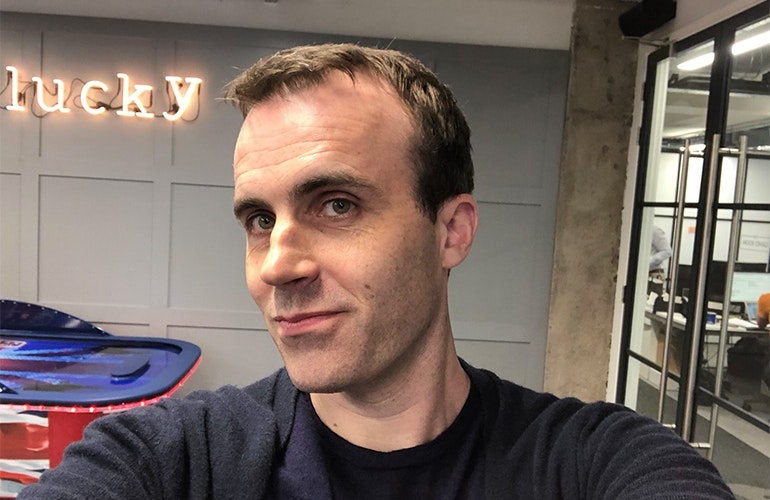
A great face up for radio. Selfies? Not and so much.
Verdict
Pros:
- Amazingly detailed depression-low-cal and nighttime photography
- Both phones seem to favour portraiture and low light
- iPhone 8 Plus past far the all-time phone yous can buy for portrait photography
Cons:
- Portrait wizardry is only available on the iPhone eight Plus, equally it requires dual cameras
- Some of the iPhone 8 Plus' portrait furnishings can exist contemporary
- Colours can expect a fleck artificial. Simply that'southward a matter of taste
- The iPhone eight Plus' sheer size means ane-handed photography is out of the question if yous don't want to run a risk dropping the telephone. A expert protective case is strongly advised
The iPhone 8 and iPhone viii Plus are undoubtedly amid the best smartphone cameras nosotros've used. And we'd be happy to recommend them to pros and novices alike.
As for which i to choose, that largely depends on what sort of shots you're after
There's no discernible departure in performance between the two models when shooting with the standard, main photographic camera.
Both iPhone 8 and iPhone 8 Plus piece of work brilliantly in low light and take great snaps of urban landscapes, parties and holidays. Images are precipitous and the level of noise is ridiculously low.
When it comes to portraits and shut-ups, nevertheless, it's a very unlike story.
As soon every bit you hitting that "Portrait Mode" button on the iPhone viii Plus, you realise the dual cameras make this the perfect telephone for any instagrammer, food-blogger or anyone that wants simply the best that tin can be achieved with a smartphone today.
Some of the most advanced features are even so in trial fashion and may not always yield brilliant results.
But it's clear that Apple has seriously given portraits a lot of thought and this is where their efforts will be directed with updates and refinements.
iPhone 8
Primary camera:
- 12-megapixels
- f/1.eight aperture
- 28mm
- Phase detection autofocus
- Optical image stabilisation
- Quad-LED (dual tone) flash
Selfie camera:
- 7-megapixels
- f/2.2 aperture
- 1080p@30fps
- 720p@240fps
- Face detection
iPhone viii Plus
Primary lens:
- 12-megapixels
- f/1.8 aperture
- 28mm
Telephoto lens:
- 12-megapixels
- f/2.viii 56mm
- Phase detection autofocus
- Optical image stabilisation
- Quad-LED (dual tone) wink
Selfie photographic camera:
- 7-megapixels
- f/2.2
- 1080p@30fps
- 720p@240fps
- Face detection
Source: https://www.uswitch.com/mobiles/reviews/iphone-8-iphone-8-plus-camera-review/
Posted by: upshawwishoune1988.blogspot.com

0 Response to "What Is Live On Iphone 8 Plus Camera"
Post a Comment